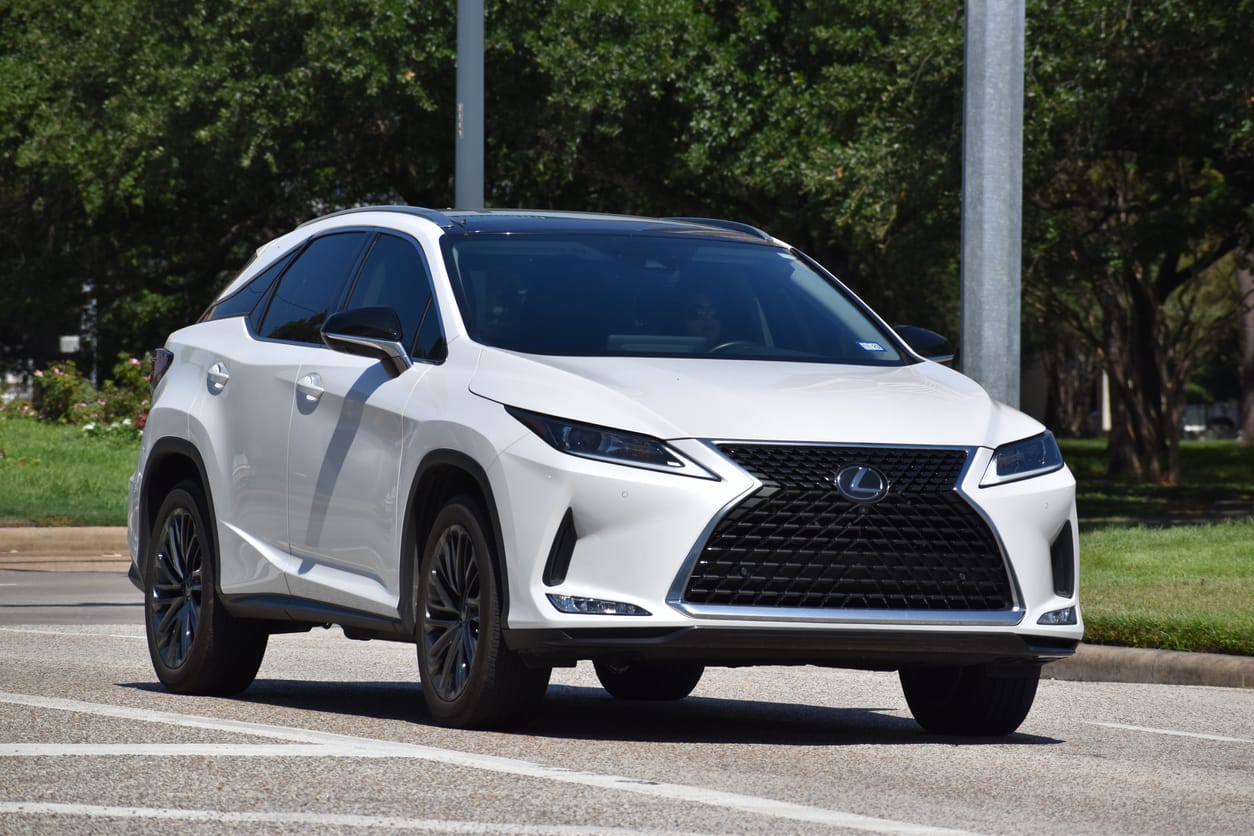Moving a vehicle across states or even within the same region can be complicated and expensive if you are not aware of the factors that determine shipping expenses. Car shipping costs depend not only on the distance between the pickup and delivery locations but also on vehicle dimensions, transport method, seasonal demand, and any additional services. For many customers, using an auto transport calculator provides an initial estimate; however, understanding all the elements behind these estimates is essential to avoid surprises. This comprehensive article details the components used in a car shipping cost calculator, examines the primary and additional influences on shipping prices, and explains how to interpret the figures provided. Whether you are shipping a classic luxury car or a simple sedan, knowing these factors can help you choose the best options and manage your budget effectively.
Shipping companies use advanced software and tailored queries based on vehicle specifications and market conditions to generate quotes. Customers often wonder why two quotes for similar vehicles over comparable distances can differ widely. Factors such as mileage, vehicle size and weight, transport type, seasonal fluctuations, and specific pickup or delivery details all play a role. Surcharges for insurance upgrades or expedited services are also common. Demystifying these points empowers you to make informed decisions and negotiate a fair price with your auto transport provider.
Ultimately, whether you are shipping a classic car or a simple sedan, the goal is to protect your vehicle while balancing cost. By understanding the complexities behind shipping costs, you can use online calculators and consultation services effectively to plan your transportation with minimal unexpected expenses. Keep reading to learn what affects the cost of shipping cars.
- The auto shipping cost calculator estimates your quote based on factors like mileage, vehicle size, and transport type.
- Main cost drivers include distance, vehicle characteristics, seasonal demand, and pickup/delivery logistics.
- Additional factors such as carrier routes, vehicle operability, and extra insurance options can further affect your shipping cost.
- Understanding these elements helps you align your relocation budget and find economical shipping solutions.

Modern algorithms and industry data allow the auto shipping calculator to assess details—from vehicle type to shipping timeline—and calculate an initial figure based on average cost per mile, vehicle dimensions, and available carrier routes. The tool incorporates real-time data such as fluctuating fuel prices, seasonal carrier availability, and current demand trends to provide a competitive, realistic estimate.
Additional inputs, such as whether the vehicle is operable or requires special handling, further refine the quote. A classic, high-value car might incur extra charges for enclosed transport and higher insurance premiums. Even factors like loading and unloading times or the need for expedited shipping are considered. This systematic approach ensures the estimate mirrors real-world pricing as closely as possible.
The auto transport calculator relies on precise customer information. Key details include:
- Exact pickup and drop-off locations
- Vehicle make, model, and year
- Vehicle condition (operable or inoperable), dimensions, and weight
- Preferred shipping date and delivery window
It is also important to specify the type of transport desired (open versus enclosed) as this directly affects the price. Accurate details help the calculator fetch localized pricing adjustments—such as regional fuel costs and labor charges—and prevent discrepancies between the estimate and the final quote.
Once you receive an estimate, it is presented as a breakdown of charges including a base rate (typically calculated using mileage), a markup for vehicle dimensions, and surcharges based on seasonal demand or route-specific conditions. Higher mileage fees may reflect longer routes or increased fuel costs, while expedited services or overnight shipping can create additional charges. A detailed, transparent breakdown helps you compare estimates from different providers and negotiate better terms.
Standard components often included in the estimate are:
- Base mileage fees
- Surcharges for vehicle dimensions
- Seasonal premiums
- Taxes and administrative fees
Additional fees may cover special handling for classic or high-value vehicles and optional services like door-to-door versus terminal-to-terminal shipping. Reviewing each line item carefully will help you understand the full context of your quote and what might affect the final billing.

Mileage is a key factor in shipping costs. The longer the distance between pickup and delivery, the higher the cost, due to increased fuel consumption, driver hours, and tolls. Mileage fees are calculated on a per-mile basis and vary with current fuel prices and route specifics. A long-distance move naturally leads to higher fees, and additional surcharges may apply for challenging routes with heavy traffic or difficult terrain. Many shipping companies also enforce a minimum mileage fee for short trips.
A vehicle’s size and weight affect shipping costs because larger or heavier vehicles require more space, stronger carriers, and sometimes extra labor for loading and unloading. For instance, a compact sedan typically incurs lower fees than an SUV, truck, or classic car. Larger vehicles may reduce the overall efficiency of the carrier’s load, resulting in a higher cost per vehicle. Accurate measurements and weight details help ensure that the quote reflects the true expense.
The type of transport service you choose dramatically influences cost. Open carrier transport is generally more economical and is the industry standard since it allows multiple vehicles to be shipped simultaneously. In contrast, enclosed transport, providing protection from weather and road debris, is preferred for high-value, classic, or luxury vehicles despite its higher cost. The auto shipping calculator automatically adjusts the quote based on your choice, helping you balance cost against necessary protection.
Seasonal fluctuations can drive shipping rates higher or lower. During peak moving seasons (typically spring and summer), demand increases and carriers operate at full capacity, resulting in higher rates. Conversely, off-peak seasons may present lower costs due to reduced demand and increased carrier availability. Seasonal surcharges may also be applied to offset risks from adverse weather conditions. Planning your shipment during off-peak periods can help reduce costs.
The Effect of Pickup and Delivery Locations on Your Quote
Pickup and delivery locations significantly impact shipping costs. Urban areas with high demand and congestion often incur higher fees due to logistical complexities, while rural areas might attract extra charges if they are far from central depots. Detailed and precise addresses are essential so that extra fees such as fuel surcharges or terminal fees can be accurately assessed. Clarifying whether door-to-door service is required versus terminal-to-terminal pickup can also influence the final price.

A vehicle’s operability is an important cost determinant. Operable vehicles can be driven to the carrier’s location, whereas inoperable vehicles—due to mechanical issues, damage, or restoration projects—require special handling. Extra equipment like winches or ramps may be needed, and additional risks can lead to higher insurance premiums or surcharges. It is crucial to indicate your vehicle’s operability status accurately when requesting a quote.
If you need expedited shipping, expect to pay extra. Expedited services prioritize your vehicle on the carrier’s schedule and might involve rerouting or other adjustments to speed up delivery. These services reduce the carrier’s ability to consolidate loads, often leading to a higher per-mile cost and additional fees for express handling. Carefully assess whether the benefits of faster delivery justify these extra costs.
Most carriers include a basic level of insurance in their quotes, but you may opt for additional coverage to protect against damage or loss—especially for high-value or sentimental vehicles. Extra insurance increases overall cost but can offer peace of mind by covering rare, high-cost events. Insurance options in the quote are usually presented as either a fixed surcharge or a percentage increase in the final price. Deciding on the appropriate coverage depends on your risk assessment and the value of your vehicle.
The decision between terminal-to-terminal and door-to-door service affects pricing. Terminal-to-terminal service, where you drop off and pick up your vehicle at designated locations, typically results in lower fees as it reduces extra travel. Door-to-door car shipping service is more convenient but generally more expensive due to additional coordination and travel time required by the carrier. Your budget and need for convenience will determine which option is best for you.
Fuel prices play a crucial role in shipping expenses. As fuel prices fluctuate, carriers adjust the per-mile cost by adding fuel surcharges to the base rate. Modern auto transport calculators update these surcharges in real time, ensuring that the estimate reflects current market conditions. Higher fuel costs directly translate to increased shipping fees, while lower prices may lower the overall quote.

Effective budgeting for a vehicle shipment means integrating the auto transport quote into your overall moving expenses. Use the calculator’s estimate as a baseline and prepare for additional fees such as extra insurance, expedited services, or unexpected surcharges. Building a contingency fund—often 10-15% of the quoted amount—can help cover minor unforeseen expenses and keep your budget on track.
Since the car shipping industry is competitive, it is advisable to gather multiple estimates. Comparing detailed quotes from various carriers helps identify hidden fees and differences in service quality. Using a reputable auto shipping calculator ensures that foundational parameters are consistent, so you can negotiate confidently and choose the offer that best fits your budget.
One of the greatest advantages of using an auto shipping calculator is its ability to identify cost-effective shipping options. By inputting different parameters—such as open versus enclosed transport or terminal-to-terminal versus door-to-door service—you can compare various pricing models. The detailed breakdown allows you to pinpoint which components, such as fuel surcharges or distance fees, have the most impact on the final quote, so adjustments can be made to reduce overall costs.
Even with an accurate estimate, additional fees may arise during transit. To avoid last-minute surprises, thoroughly review the quote and discuss potential extra charges with your carrier. These fees might cover additional handling, fuel surcharges, or residential pickup and delivery services. Maintaining clear communication and setting aside a contingency fund can help you manage these unforeseen expenses smoothly.

The exact routes taken by carriers can affect shipping costs even when mileage is similar. Routes with heavy traffic, tolls, or challenging terrain will incur higher fuel and labor costs. Additionally, detours or indirect routes due to road conditions or local regulations can add time and expense. Some providers offer route optimization to balance efficiency and cost, so understanding these factors can help you evaluate quotes accurately.
The supply of transport carriers in your region influences pricing. In markets with limited carrier availability, competitive pressures can drive prices higher. Conversely, in areas where a surplus of carriers exists, you may benefit from lower rates. Transporter availability can change rapidly with economic conditions, seasonal trends, or unexpected events, so flexibility with your shipping dates can help secure a better rate.
Unique, classic, or high-value vehicles often require special handling—such as enclosed carriers or climate-controlled transport—to ensure safe delivery. These specialized services incur additional fees due to the extra care and equipment required. When requesting a shipping quote, specifying any special handling needs is essential so that the estimate accurately reflects these higher costs.
Pricing can vary significantly by region due to differences in operating costs, labor rates, and local regulations. For example, urban areas with high congestion and costly labor may see higher fees than rural or suburban areas with abundant carriers. Regional price differences are incorporated into auto transport calculators through historical data and current economic indicators, so being aware of these variations can help you plan your shipment more precisely.

Providing complete and precise vehicle details—such as year, make, model, dimensions, weight, and current condition—is critical for an accurate quote. Even minor inaccuracies can lead to significant differences between the estimated and final price. A well-documented vehicle profile ensures that the calculator allocates the proper space, handling requirements, and insurance levels needed for safe transport.
A clear shipping timeline is also vital. Providing your desired shipment date and acceptable delivery window helps carriers plan more effectively, which can lead to better pricing options. Flexible timelines might allow for consolidated shipping routes and discounts, whereas very narrow timelines or expedited requests tend to incur higher fees. Detailed scheduling information allows for more accurate and customized quotes.
Understanding what is included in your shipping estimate helps prevent surprises later. The calculated quote generally covers base services, fuel surcharges, basic insurance, and standard administrative fees—but may exclude extras like expedited shipping, special handling, or door-to-door pickup. A careful review of the itemized breakdown enables you to identify additional costs and better compare offers from multiple carriers.
For complex shipments, such as those involving luxury, classic, or inoperable vehicles or requiring very tight timelines, a personalized consultation may be necessary. Speaking directly with an auto transport broker can provide insights that standard calculators may not capture. Experts can tailor the quote to account for unique handling requirements, additional insurance, or other special considerations that ensure your vehicle is shipped safely and on budget.

Q: What factors most significantly affect the cost of shipping my car? A: The cost is mainly influenced by mileage, vehicle dimensions, transport type (open vs. enclosed), seasonal demand, and specific pickup and delivery locations. Additional factors, including operability, special handling, and optional insurance upgrades, can further impact the final price.
Q: How does the car shipping cost calculator work? A: It uses detailed technical inputs such as vehicle specifications, distances, and current market data to generate an estimated shipping quote. Factors like mileage, vehicle size, transport type, and regional cost variations are all considered to provide a comprehensive expense breakdown.
Q: Can I adjust my shipping options to lower the overall cost? A: Yes. Opting for more economical choices—like terminal-to-terminal delivery over door-to-door, open carrier transport instead of enclosed, or a flexible shipping timeline—can help lower costs.
Q: Will additional fees apply beyond the estimate provided by the calculator? A: In some cases, extra fees may arise due to additional insurance, expedited shipping, or unexpected route changes. It’s important to review the estimate thoroughly and discuss potential extras with your provider.
Q: When should I seek a personalized consultation for my shipment? A: A consultation is recommended for complex shipments (involving classic, high-value, or inoperable vehicles), for expedited shipping needs, or when unique logistical concerns are present. This ensures all variables are considered for an accurate, tailored quote.
Q: How do regional variations in fuel prices affect my shipping costs? A: Fuel prices directly affect the per-mile fee. Higher fuel costs result in increased surcharges, while lower fuel prices can reduce the overall rate. Calculators update these in real time to reflect current market conditions.
Q: How important is providing exact vehicle details during the estimation process? A: Extremely important. Exact measurements, weight, condition, and operability directly affect space allocation, the type of carrier needed, and overall cost, so accuracy is essential to avoid discrepancies in the final quote.

Ship a Car, Inc. and other reputable auto transport companies rely on detailed data and advanced calculators to help customers understand the cost dynamics of shipping vehicles. By examining factors such as mileage, vehicle dimensions, transport types, seasonal demand, and regional differences, you can plan your shipment more strategically and budget effectively. A transparent breakdown of costs empowers you to negotiate confidently and choose the best service options for a smooth, predictable transport experience.
When it comes to shipping your car, knowledge is power—and Ship A Car, Inc. puts that power directly in your hands. With their advanced auto transport cost calculator, you can receive a quote in minutes, backed by real-time data on fuel prices, seasonal demand, vehicle specifications, and route conditions. Unlike generic shipping services that leave you guessing, Ship A Car, Inc. breaks down every factor influencing your quote—from mileage and vehicle weight to transport type and insurance—so you know exactly what you’re paying for. Whether you’re moving a classic car, a luxury SUV, or a reliable sedan, Ship A Car, Inc. offers tailored, transparent pricing and expert consultation for even the most complex shipping needs. Call (866) 821-4555 now to get a custom quote or use the online auto transport calculator for a quick and reliable estimate today.




